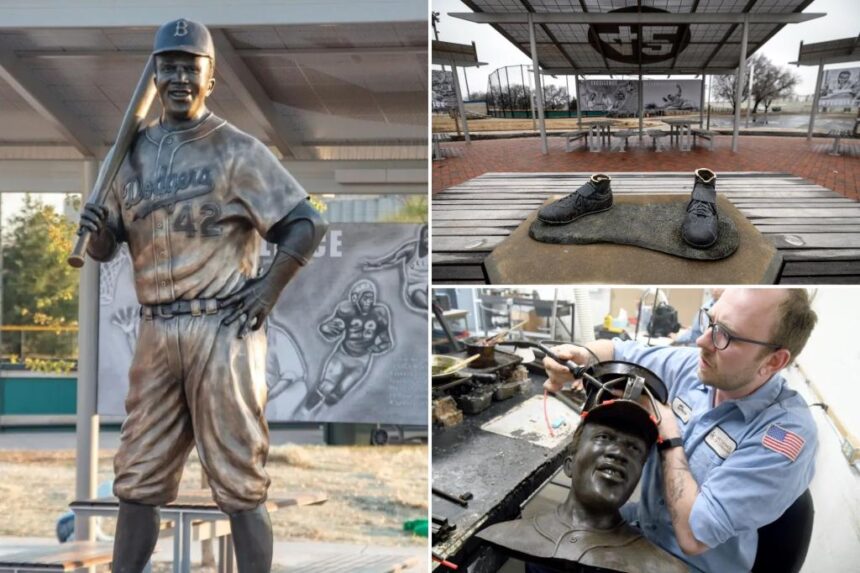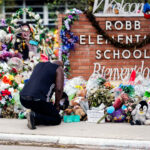Working at the Art Castings studio in Loveland, Colorado, metalsmith Alex Haines is carefully coating a mold of Jackie Robinson with wax. The significance of this project is not lost on him, as it will soon provide the city of Wichita, Kansas, with a replacement bronze statue of the baseball legend after the original was brazenly destroyed by thieves.
Reflecting on the project, Haines remarked, “Many sculptures come through here, but some are more important than others. And this is definitely one of them.”
The incident took place in January when the original statue of Jackie Robinson was cut off at its ankles by thieves, leaving only his cleats behind at McAdams Park in Wichita.
The park is home to a youth baseball league called League 42, named after Robinson’s uniform number with the Brooklyn Dodgers, where he broke the major league’s color barrier in 1947.
Following the theft, a wave of national donations poured in, enabling Wichita to swiftly order a replacement statue.
Bob Lutz, the executive director of the nonprofit that commissioned the statue, expressed gratitude for the overwhelming support, stating, “There’s been a lot of serendipity when it comes to League 42 throughout our entire existence. It’s almost like there’s somebody watching out for us. And certainly, in this regard, we feel like there was a guardian angel making sure that we could do this statue again.”
The nonprofit received a substantial amount of donations, including a $100,000 gift from Major League Baseball, which covered the replacement cost of the statue and other enhancements such as landscaping and safety measures.
The remaining funds raised will be used to improve the nonprofit’s programming and facilities, including the Leslie Rudd Learning Center opened last year.
Fortunately, the replacement statue will closely resemble the original, which was created by the late artist John Parsons, a friend of Lutz. This was made possible as the original mold was still viable.
Lutz expressed relief that the replacement statue will maintain the essence of the original, saying, “If that wasn’t the case, I don’t know that I would feel as good about all this as I do.”
Despite the setback, the community rallied together, and the stolen bronze cleats from the original statue found a new home at the Negro Leagues Baseball Museum in Kansas City, Missouri.
Robinson’s connection to the museum is significant, as he played for the Kansas City Monarchs of the Negro Leagues before breaking the color barrier in the major leagues. He is revered not only as a sports legend but also as a civil rights icon.
“The outpouring of support that folks have gotten as a result of this, it reminds us that light indeed does come out of darkness,” said Bob Kendrick, the president of the Negro Leagues Baseball Museum.
At the museum, the cleats are displayed alongside a gunfire-riddled plaque from outside Robinson’s birthplace, serving as a reminder of the challenges he faced.
Despite the adversity, the community remains resilient, with visitors like Emilio Estevez acknowledging Robinson’s enduring legacy and the inspiration he continues to provide.
“We can all learn from that,” Estevez remarked, emphasizing that even in the face of adversity, Robinson’s legacy remains strong.
“He’s still in all our minds. He’s still very present, like here in the museum, very prevalent,” he concluded.





